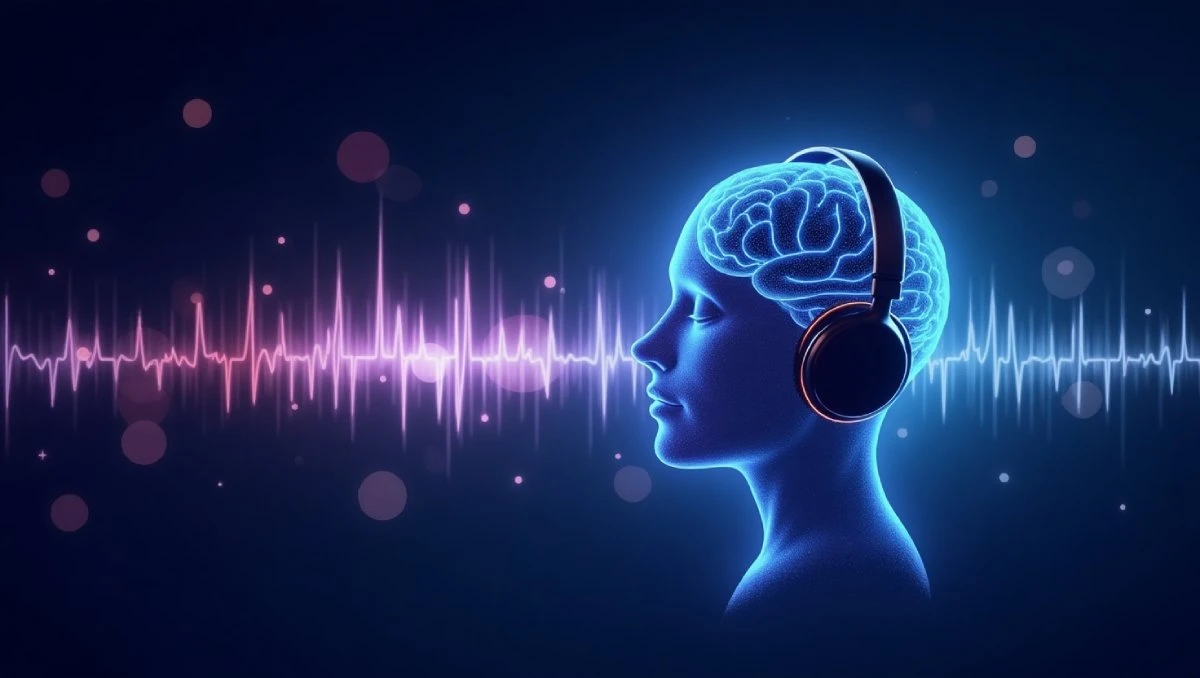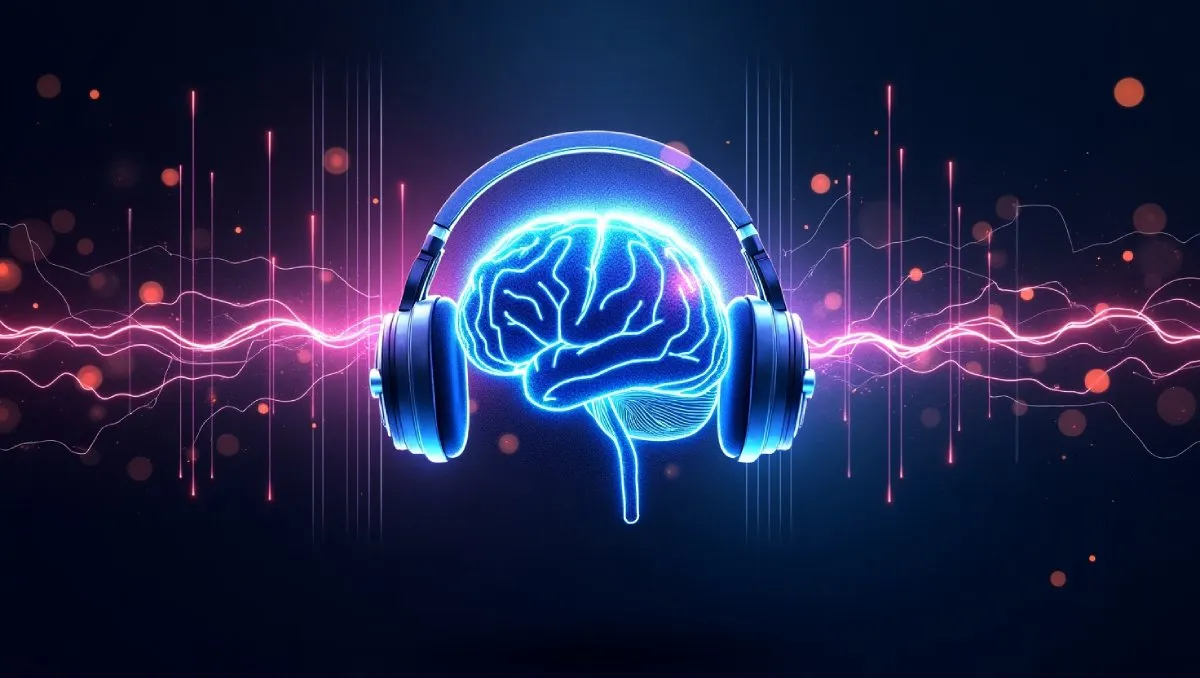Binaural beats have garnered widespread interest in recent years as a natural method for enhancing mood, focus, sleep, and overall well-being. If you’ve ever asked yourself what is binaural beat, you’re not alone. In this guide, we’ll explore everything from the basic science behind these sounds to the many benefits they offer. We’ll also answer common questions such as what is binaural, what is a binaural beat, and what does binaural mean. By the end, you’ll understand not only the mechanics behind binaural beats but also how they can transform your daily life.
Introduction: The Fascination with Binaural Beats
In today’s fast-paced world, stress and distraction are constant challenges. This has driven many to explore alternative methods for enhancing mental clarity, relaxation, and overall well-being. Among these methods, binaural beats have emerged as a fascinating area of study. But what is binaural beat exactly? At its core, binaural beats are auditory illusions created when two tones of slightly different frequencies are presented separately to each ear. This subtle difference tricks your brain into perceiving a third, distinct tone—one that is not actually present in the external environment.
People often search for what is binaural because they want to know if these auditory phenomena can genuinely improve concentration, reduce anxiety, or even assist with sleep. In this article, we’ll break down the science and the practical applications of binaural beats, exploring questions such as what is a binaural beat, what does binaural audio mean, and what does binaural music do. Whether you are a curious beginner or a seasoned enthusiast, read on to discover how these frequencies might benefit your life.
What Are Binaural Beats and How Do They Work?
To answer what are binaural beats and how do they work, we must delve into a bit of auditory science. When two pure tones—each with a frequency that is just slightly off from the other—are played in each ear independently, your brain processes the frequency difference as a beat. For instance, if your left ear hears a tone of 210 Hz and your right ear hears a tone of 200 Hz, your brain will create a binaural beat at a frequency of 10 Hz. This phenomenon is not the result of an actual sound wave, but rather a perceptual illusion generated by the brain’s internal processing.
The fascinating aspect is that different binaural beat frequencies correspond with various brainwave states. Research suggests that certain frequencies can stimulate states of relaxation, heightened focus, or even deep sleep. For example, lower frequencies (around 1–4 Hz) are associated with deep sleep, while mid-range frequencies (around 8–12 Hz) align with relaxed wakefulness and light meditation. This leads many to wonder what frequency is binaural beats most effective for their needs, and the answer often depends on the desired outcome.
The Science Behind Binaural Audio
The term what does binaural audio mean encompasses more than just the creation of auditory beats—it refers to the recording and playback technique designed to mimic the natural hearing experience. Binaural audio uses two microphones placed inside a dummy head or closely spaced in a human-like configuration, capturing sound exactly as human ears would hear it. This method creates a 3D auditory illusion, allowing listeners to feel immersed in the environment.
But what does binaural audio do? By reproducing the spatial cues that our brains use to locate sounds in the real world, binaural audio creates an incredibly lifelike listening experience. This is especially useful in virtual reality (VR) environments, gaming, and immersive audio experiences where realism is key. When binaural beats are mixed with this type of audio recording, the effect can be both soothing and engaging, providing a multisensory experience that can enhance meditation, relaxation, and even learning.
Understanding Binaural Frequencies and Their Effects
When people ask what are binaural frequencies, they are referring to the specific tones used to generate binaural beats. These frequencies are carefully selected to produce the desired neurological effect. For instance:
- Delta waves (1-4 Hz): Associated with deep sleep and restorative rest.
- Theta waves (4-8 Hz): Linked with creativity, deep meditation, and stress relief.
- Alpha waves (8-12 Hz): Promote relaxation and are ideal for reducing anxiety.
- Beta waves (12-30 Hz): Encourage alertness and focus but may also increase anxiety if too dominant.
- Gamma waves (30-100 Hz): Tied to higher cognitive functions and consciousness.
Many users ask what do binaural beats do for you, and the answer is highly personalized. Some find that lower frequencies help them sleep better, while others report improved concentration with mid-range frequencies. Additionally, the phenomenon of entrainment—the process by which your brainwave frequencies begin to align with the rhythm of the binaural beat—can lead to enhanced cognitive performance and emotional balance.
The Role of Binaural Music in Health and Wellness
What is binaural music and what is binaural sound? In the context of music, binaural beats are often layered over soothing soundscapes or ambient tracks to create a harmonious experience. This blending of rhythmic tones with relaxing music can help deepen meditation practices, facilitate stress reduction, and even boost creativity. Many listeners report that what does binaural music do is not just about relaxation—it also enhances the emotional quality of the music, making it feel more immersive and engaging.
For those curious about what does binaural audio do in a musical context, consider that this approach taps directly into the brain’s auditory pathways. By mimicking natural sound processing, binaural music can lead to a more profound sense of calm and focus. Artists and sound therapists often experiment with what is binaural beats benefits by crafting tracks that target specific brainwave states, thereby tailoring experiences to improve mood, enhance sleep quality, or promote deep concentration.
Real Time Binaural: What Is It and How Is It Used?
The concept of what is real time binaural refers to the ability to generate and modulate binaural beats on the fly. With the advent of advanced digital audio technology, it is now possible to create dynamic binaural soundscapes that adjust in real time to the listener’s needs. This is especially useful in therapeutic settings and interactive media, where the auditory environment must respond instantly to user inputs or external stimuli.
Real-time binaural processing is a game changer for personalized audio experiences. For instance, some meditation apps now use real-time binaural beats to adjust the frequency based on the listener’s heart rate or brainwave activity. This adaptive approach ensures that the benefits of the binaural beats are maximized for the individual, answering the question what are binaural beats and how do they work in a more nuanced way.
Binaural Beats for Sleep: Benefits and Applications
One of the most common queries is what is binaural beats sleep all about. Many people turn to binaural beats as a natural remedy for insomnia and poor sleep quality. The lower frequencies, particularly in the delta range, are known to promote deep, restorative sleep. When you listen to binaural beats designed for sleep, your brain may begin to synchronize with these slower rhythms, leading to more relaxed and profound sleep cycles.
Some of the benefits associated with using binaural beats for sleep include:
- Enhanced Sleep Quality: By encouraging delta brainwave activity, binaural beats can deepen sleep stages.
- Reduced Insomnia Symptoms: Many users experience faster sleep onset and fewer night-time awakenings.
- Stress Reduction: The calming effects can lower cortisol levels, which might contribute to a more relaxed state before sleep.
If you’ve been wondering what do binaural beats do for you when it comes to sleep, the answer lies in their ability to gently guide your brain toward a state that is conducive to rest and recovery.
Additional Benefits: What Do Binaural Beats Do for You?
Beyond sleep, there is a plethora of benefits associated with binaural beats. Whether you are seeking to improve concentration, reduce anxiety, or simply find a moment of calm in a hectic day, binaural beats offer an array of advantages:
- Stress Relief and Anxiety Reduction: Many listeners find that the rhythmic pulses of binaural beats help lower stress levels and promote a calm mind. If you’ve ever asked what do binaural beats do, the answer often includes a noticeable improvement in mood and a reduction in anxiety symptoms.
- Enhanced Focus and Concentration: The entrainment effect of binaural beats can align your brainwaves with states of heightened concentration, making them an effective tool for studying or working on complex tasks.
- Improved Meditation Practices: For those who meditate, binaural beats provide an additional auditory cue that can help deepen the meditative state. They serve as an anchor, allowing the mind to settle and focus on the present moment.
- Creative Stimulation: Some users report that binaural beats stimulate creative thinking. The shift in brainwave patterns can open pathways to innovative ideas and solutions.
- Pain Management: Emerging research suggests that binaural beats might help distract the brain from pain signals, providing a complementary approach to traditional pain management techniques.
- Mood Enhancement: Regular exposure to binaural beats has been linked to improved overall mood, making them a popular tool in holistic wellness programs.
When considering what is binaural beats benefits, the evidence points toward a versatile and natural method for enhancing both mental and physical health.
How to Use Binaural Beats Effectively
If you’re intrigued by what is a binaural beat and what do binaural beats do for you, you might be wondering how to integrate them into your daily routine. Here are some best practices for getting started:
1. Choose the Right Environment
Create a quiet, comfortable space where you can relax without interruptions. Whether you’re meditating, working, or preparing for sleep, a calm environment can enhance the effectiveness of binaural beats.
2. Use Quality Headphones
For binaural beats to work as intended, it is essential to use stereo headphones. Since each ear needs to receive a slightly different frequency, over-the-ear headphones that offer clear sound separation are ideal.
3. Select the Appropriate Frequency
Based on your goal—whether it’s enhanced focus, relaxation, or sleep—select a binaural beat track that matches the corresponding brainwave frequency. For example, try:
- Delta (1-4 Hz): For deep sleep or relaxation.
- Theta (4-8 Hz): For meditation and creative thinking.
- Alpha (8-12 Hz): For stress relief and a calm state of mind.
4. Set a Routine
Consistency is key. Like any meditation or wellness practice, regular use of binaural beats can yield more noticeable benefits over time.
5. Experiment and Adjust
Everyone’s brain responds differently to auditory stimuli. Experiment with different frequencies and durations to determine what works best for you. This is especially important if you’re exploring what is binaural beats benefits for personal growth or therapeutic purposes.
6. Combine with Other Relaxation Techniques
For optimal results, consider integrating binaural beats with other relaxation methods such as mindfulness meditation, yoga, or deep breathing exercises.
Exploring the Diverse Applications of Binaural Beats
The versatility of binaural beats means that they are being used in a wide range of applications:
Meditation and Mindfulness
Many practitioners integrate binaural beats into their meditation sessions. For instance, if you’ve ever wondered what does binaural audio do in a meditation context, the answer is that it helps anchor your focus and facilitates deeper states of mindfulness. This process of entrainment—where your brainwaves gradually align with the rhythm of the binaural beats—can lead to profound relaxation and clarity.
Focus and Cognitive Enhancement
Students and professionals alike have turned to binaural beats to improve concentration. By tuning into frequencies that stimulate beta waves (approximately 12-30 Hz), you can boost alertness and maintain focus during intensive work or study sessions. This naturally leads to the query what do binaural beats do for you in terms of productivity—a boost in cognitive performance and the ability to stay engaged with tasks.
Stress and Anxiety Management
One of the most popular uses of binaural beats is for stress relief. The calming frequencies, particularly those in the alpha range (8-12 Hz), help reduce anxiety levels and lower overall stress. If you’re new to the concept and ask what does binaural mean in this context, it essentially refers to the process by which the sound frequencies interact with your brain’s natural rhythms to create a soothing, therapeutic effect.
Creativity and Emotional Healing
In addition to physical and mental relaxation, binaural beats have been noted for their ability to stimulate creativity and promote emotional healing. Artists, writers, and musicians often incorporate binaural music into their creative processes, harnessing the altered states of consciousness to overcome creative blocks and inspire new ideas.
Scientific Research and Future Directions
The growing interest in what is a binaural beat has spurred numerous scientific studies investigating the phenomenon. Researchers are particularly interested in how binaural beats can:
- Modulate brainwave patterns.
- Enhance cognitive function.
- Aid in pain management.
- Support emotional and psychological well-being.
While research is still ongoing, early findings suggest that the regular use of binaural beats can lead to measurable changes in brain activity. As scientists continue to explore what are binaural beats and how do they work, the potential applications in healthcare, education, and personal development are becoming increasingly apparent.
Practical Tips for Getting the Most Out of Binaural Beats
For those looking to incorporate binaural beats into their daily routine, consider the following recommendations:
- Start Slowly: Begin with short listening sessions (5-10 minutes) to allow your brain to adapt to the new auditory stimulus.
- Monitor Your Response: Notice how your mood, concentration, or sleep quality changes over time. Keeping a journal can help track the benefits you experience.
- Use Quality Sources: There are many apps and online platforms offering high-quality binaural beat tracks. Choose ones with clear descriptions of the frequencies used.
- Stay Consistent: Like any wellness practice, consistency is key. Regular sessions can enhance the entrainment effect and lead to lasting benefits.
- Combine With Other Wellness Practices: Pair your binaural beat sessions with mindfulness, yoga, or deep breathing to maximize the positive effects.
Conclusion: The Power of Binaural Sound
In summary, binaural beats offer a fascinating intersection of auditory science and holistic wellness. Whether you’re asking what is binaural beat, what is binaural audio, or what is binaural sound, the answer lies in their ability to create a unique auditory experience that can enhance focus, relaxation, creativity, and sleep quality.
From understanding what does binaural mean to exploring the intricacies of what frequency is binaural beats most effective for various states, this article has unpacked the science and practical applications of binaural beats. As we continue to seek natural methods to improve our quality of life, binaural beats represent a promising tool—one that harnesses the power of sound to promote well-being and transform everyday experiences.
By incorporating the latest research, practical tips, and clear explanations of what are binaural frequencies, we hope this guide serves as a valuable resource for anyone interested in exploring the benefits of binaural audio. Embrace the transformative potential of these subtle sounds and consider adding a session of binaural beats to your daily routine. Whether you’re looking for stress relief, enhanced concentration, or a better night’s sleep, the science behind binaural beats suggests that this auditory phenomenon might be just the tool you need.
Remember, as with any wellness practice, it’s important to experiment and find the frequency that works best for you. The journey to understanding what do binaural beats do is a personal one, and with patience and consistency, you might discover significant benefits that enhance both your mental and physical health.




